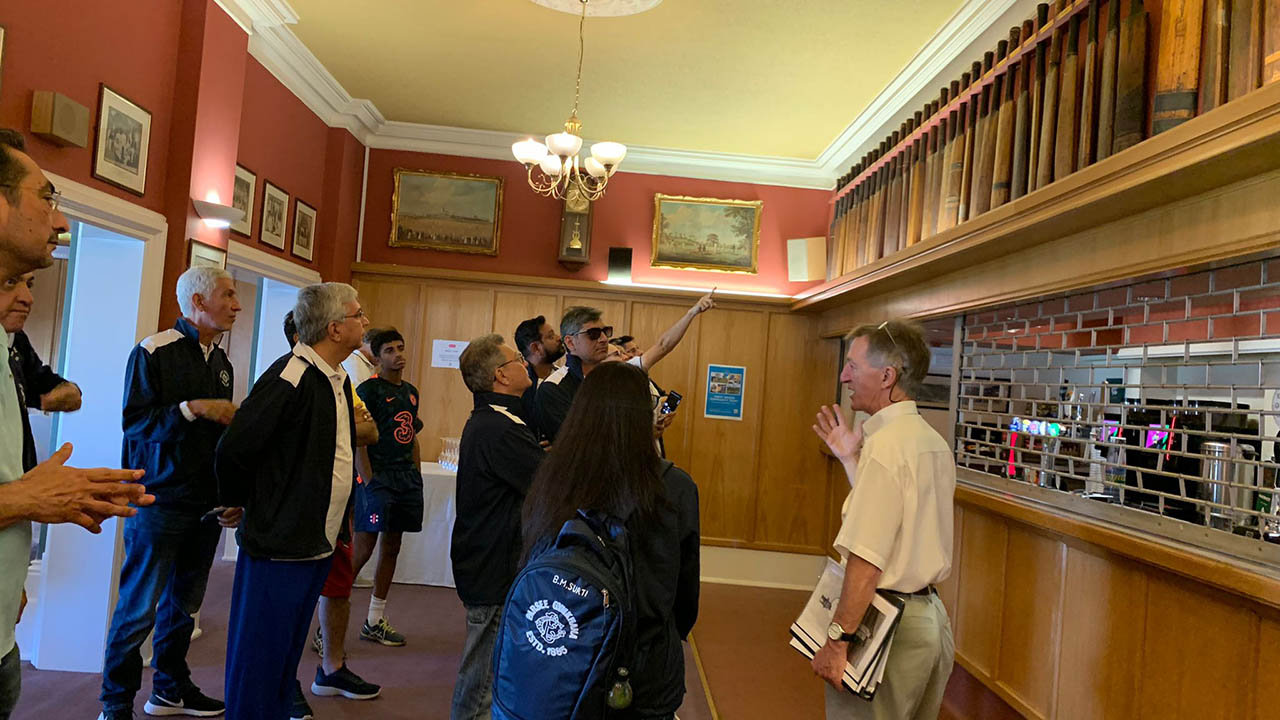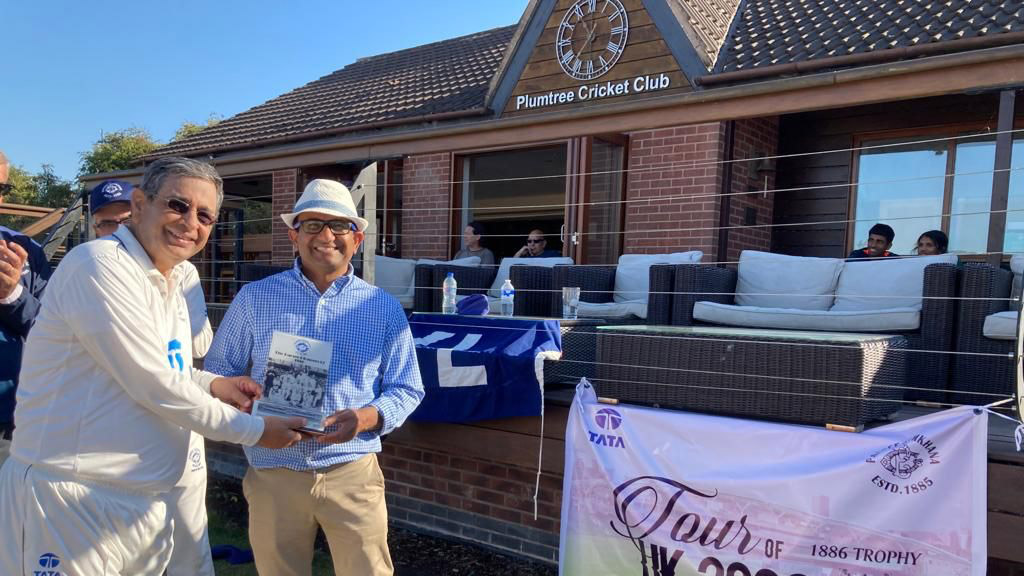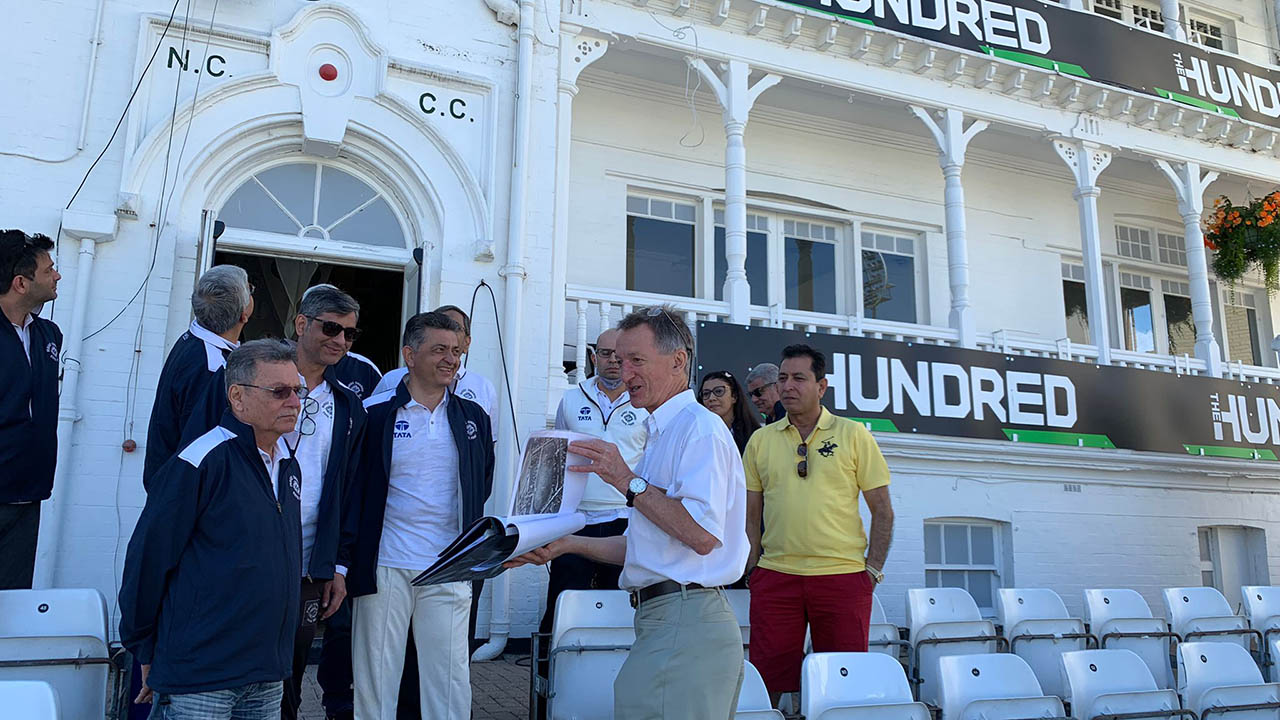A pioneering party of Parsee cricketers made the first tour of England by a team from India in 1886 – including a two-day game at Trent Bridge. Their descendants were back at the ground this autumn and would have found much that has changed in all that time.

But the 1886 party would have recognised the famous Trent Bridge Pavilion, which had been opened earlier in that season. Though some changes have been made, the building is essentially the one in which Sir Henry Bromley, first President of Nottinghamshire, admired the ‘pluck and perseverance’ of the Parsee team.

Current committee member Dr Ravi Badge said: “It was a pleasure and honour to welcome the Parsee Gymkhana club of Mumbai to Trent Bridge”.
The Parsee Gymkhana team is on a cricket tour – visiting Nottingham for the first time since 1886. The itinerary included a game against the East Midlands Over-40 team at Plumtree on 12 August. The Over 40 club (formed in 1936) is believed to be world’s largest wandering club.

Parsees were the earliest community in India to take up cricket and are known to have played the game since around 1840 and the first Parsee cricket club - the Oriental Cricket Club - was founded in 1848.
To mark the 1886 tour and many memorable moments of the sport, Khodadad Yazdegardi (Vice President and Cricket Secretary of PG) along with English Businessman Matt Greenwell, started the 1886 Trophy in 2016. The PG team won the first edition, Charles Alcock X1 won the second edition while the third edition was won by Parsee Gymkhana at Kia Oval in London during their UK Tour of 2019.
In a close game at Plumtree, the Parsees made 182-6 and The Over-40 side won by making 184-3 in 25 overs, doing a little better than the Gentlemen of Nottinghamshire who drew with the 1886 Parsee XI.
The team members in that era were enthusiastic club cricketers who were willing to pay their own expenses. They played 28 matches, winning just one but making plenty of friends and drawing reasonable crowds wherever they played. Their visit to England had more of an educational objective than a competitive one – the chief aim being to improve their cricket.
The match against The Gentlemen of Nottinghamshire took place about two-thirds of the way through the tour, on 12-13 July 1886. The Gentlemen of Nottinghamshire side was made up of local club players and some more familiar names from the county’s ranks of amateur cricketers – most notably John Auger Dixon, a former county captain after whom the main gates at Trent Bridge are named.
Dr Badge, who was joined by club President ‘Basher’ Hassan at Plumtree, said, “We at Nottinghamshire County Cricket Club are pleased to host both teams with strong history of playing competitive cricket and build on this experience to further consolidate the values of cricket.”
